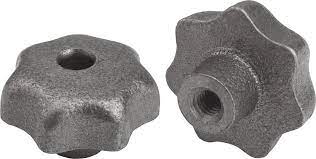Table of Content
- What is Cast Iron?
- What makes cast iron an important material?
- Influence of Cooling Rate on the Properties
- Types of Cast Iron
What is Cast Iron?
Cast iron are ferrous alloy with greater than 2% carbon. They also contain small amounts of other materials such as silicon, sulfur, manganese, & phosphorous. In general, it consists of alloys of carbon & iron. They are the least expensive of all metals and are found in plentiful resources next to aluminium.

What makes cast iron an important material?
- It is a cheap metallurgical substance.
- Good mechanical rigidity and good strength under compression.
- Easy castablility.
- Good machinability can be achieved when a suitable composition is selected.

Cast Iron Chemical Composition:
- Carbon – 3.0 to 4.0%
- Silicon – 1.0 to 3.0%
- Manganese – 0.5 to 1.0%
- Sulphur – up to 0.1%
- Phosphorus – up to 1.0%
Influence of Cooling Rate on the Properties

Types of Cast Iron
- Grey (General purpose)
- White (Hard & Wear resistant)
- Malleable (Heat treated for ductility)
- Spheroidal Graphite (Some ductility)

1. Grey Cast Iron
It is the least expensive & the most common type of cast iron. It is an alloy of carbon & silicon with iron.

Composition:
- Carbon – 2.5 to 4%
- Manganese – 0.4 to 1%
- Sulphur – 0.02 to 0.15%
- Silicon – 1 to 3%
- Phosphorous – 0.15 to 1%
- Remaining is iron
Characteristics:
- Good compressive strength
- Good torsional & shear strengths
- Good corrosion resistance
- Good Wear resistance
- Excellent machinability
- Outstanding sound and vibration-damping capacity
Applications
Typical applications include; Machine tool bodies, engine blocks, engine cylinders, brake drums, camshafts, pipe & pipe fittings, household & agricultural appliances, etc.
2. White Cast Iron
White Cast iron derives its name from the fact that its fracture surface has a white or silvery appearance.
Composition:
- Carbon – 1.8 to 3%
- Manganese – 0.25 to 0.8%
- Sulphur – 0.10 to 0.30%
- Silicon – 0.5 to 1.9%
- Phosphorous – 0.05 to 0.2%
- The remaining is iron
Characteristics:
- Hard & Brittle
- High abrasion resistance
- High tensile strength & low compressive strength
Applications:
Typical applications include the production of malleable, rolls, wear plates, pump linings, and balls; Used for inferior casting & in places where the hard coating is required as in the outer surface of car wheels.

3. Malleable Cast Iron
It is a cast iron that has been heat treated so that it has significant ductility & malleability.
Composition:
- Carbon – 2.0 to 3.0%
- Manganese – 0.2 to 0.6%
- Sulphur – 0.10%
- Silicon – 0.6 to 1.3%
- Phosphorous – 0.15 %
- The remaining is iron.
Characteristics
- Good ductility & machinability
- High yield strength & tensile strength
- Excellent impact strength
- Not as brittle as grey cast iron
- High Young’s modulus & low coefficient of thermal expansion.
- Good wear resistance & vibration damping capacity
- Excellent machinability
Applications:
Widely used in automobile industries, typical components include brake shoes, pedals, levers, wheel hubs, axle-housings, connecting rods, transmission gears & door hinges.

4. Spheroidal Graphite or Nodular Cast iron
Spheroidal graphite (SG) is also known as ‘Nodular iron’ or as ‘ductile iron’.
Composition:
- Carbon – 3.2 to 4%
- Manganese – 0.2 to 0.5%
- Sulphur – 1.8 to 3%
- Silicon – 1.8 to 3%
- Phosphorous – 0.08% max
- Remaining is iron
Characteristics:
- Excellent ductility, tensile, & yield strengths than grey & malleable cast iron
- Good fatigue strength
- Good impact strength
- Hardness & high modulus of elasticity
- Corrosion resistance similar to that of grey iron
- Excellent castability & wear resistance
- Good machinability
- Ability to resist oxidation at high temperatures
Applications:
Typical applications include; Valves, pump bodies, crankshafts, gears, pinions, rollers, rocker arms, flanges, pipe fittings, power transmission equipment, earth-moving machinery, & other machine components.

References:
1. AQC Inspection









